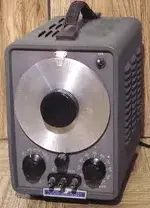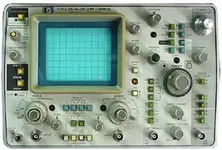well the motorboating is from your meter loading the circuit.
it might be the joe meek might not have enough drive.
using a .1uf at 400V cap hooked in series with the positive output of the AF gen. set the signal to two volts peak to peak.ground the AF generator to the chassis. now use that to inject your signal. this is assuming you changed the cathode bypass cap in the first stage. now with the power off take an ohm meter test the input attenuator and turn it to full scale so it should read 500K on the wiper to ground. there should be ideally zero ohms from the "flat " input to the wiper. if that is ok. power on the unit and inject audio in the first stage. it should give you an output about 20Vp-p going to the phase splitter with 2vp-p going in.
the reason to put a cap in series with your af generator it will isolate it, thus preventing a ground loop that typically knocks out AF generators



